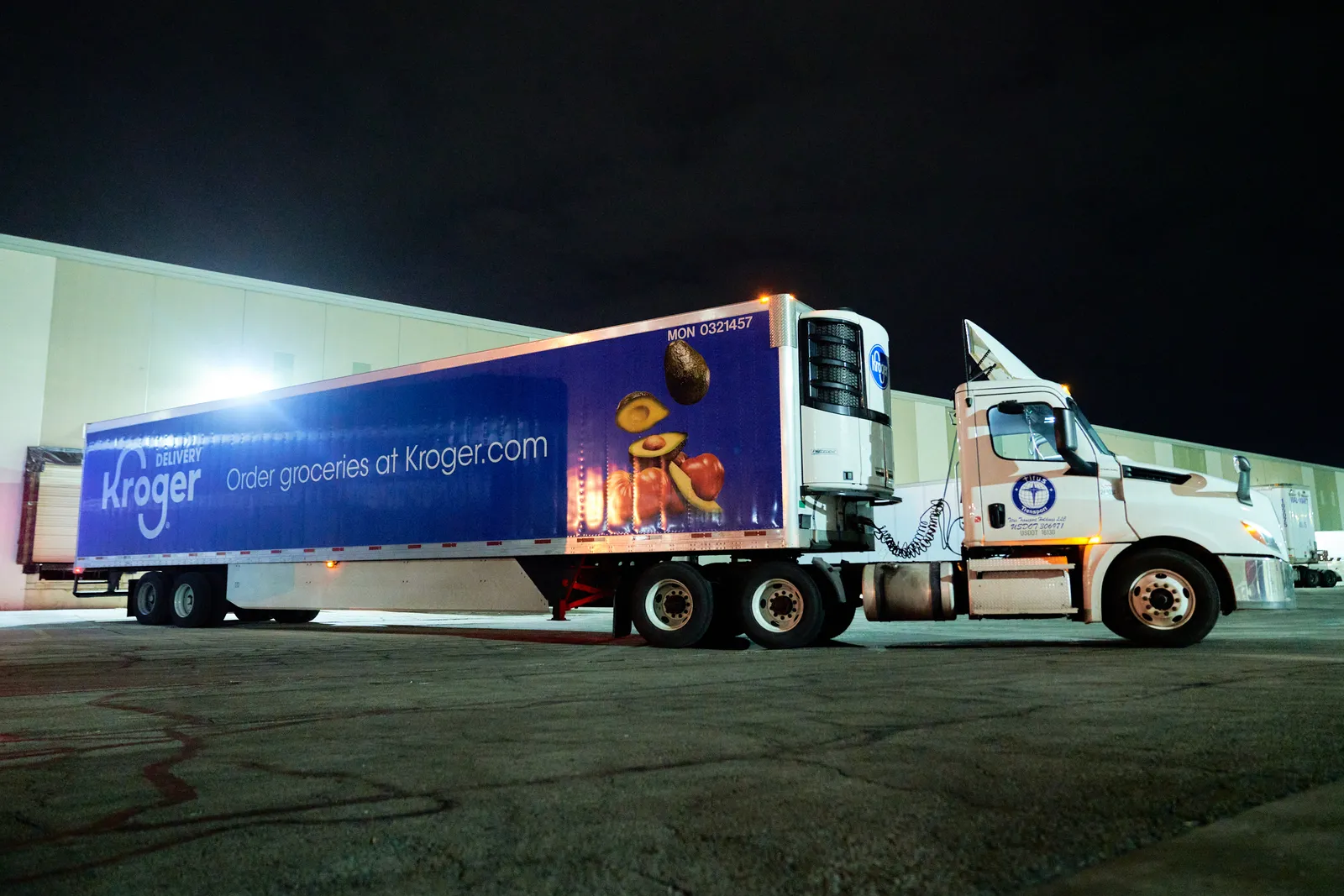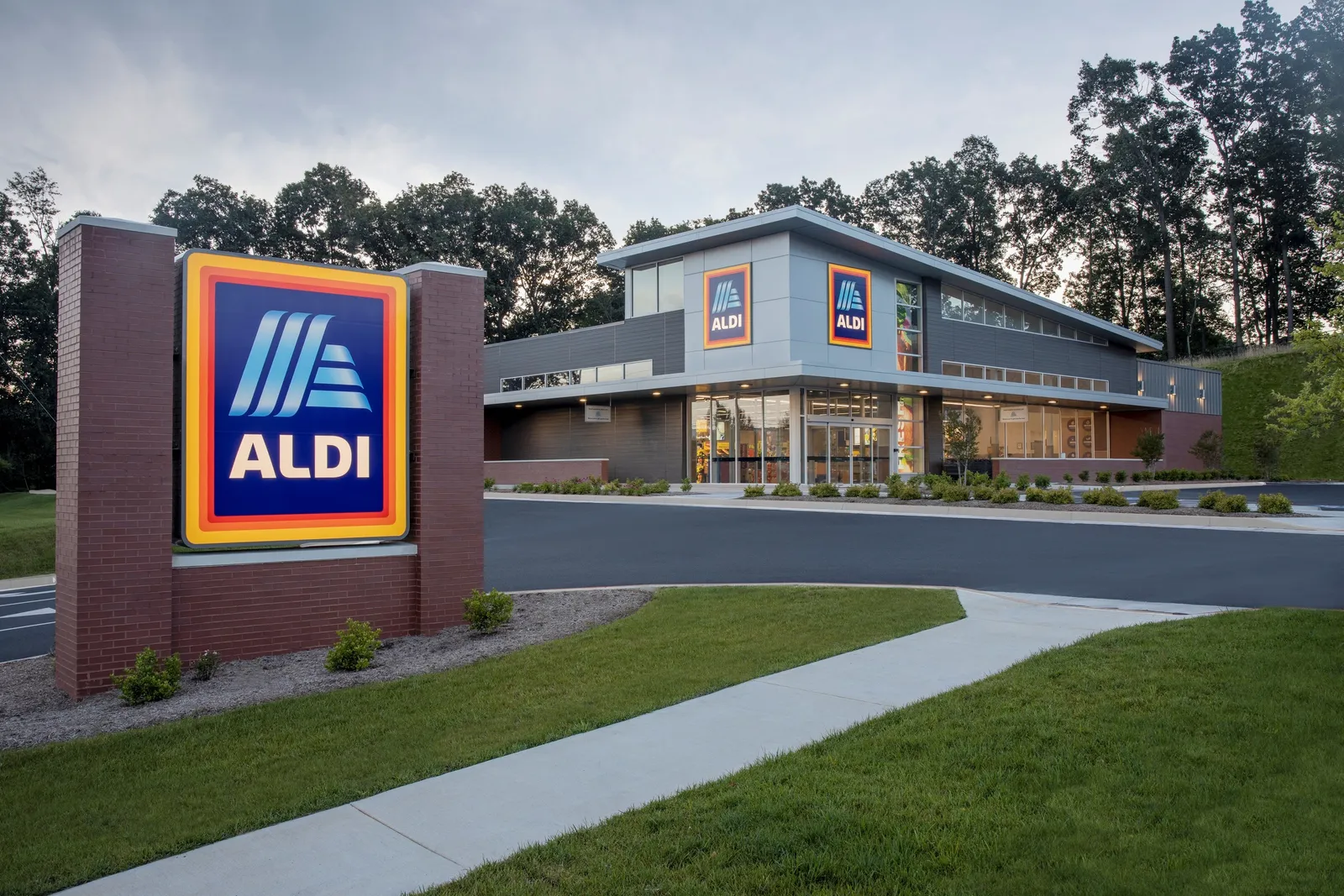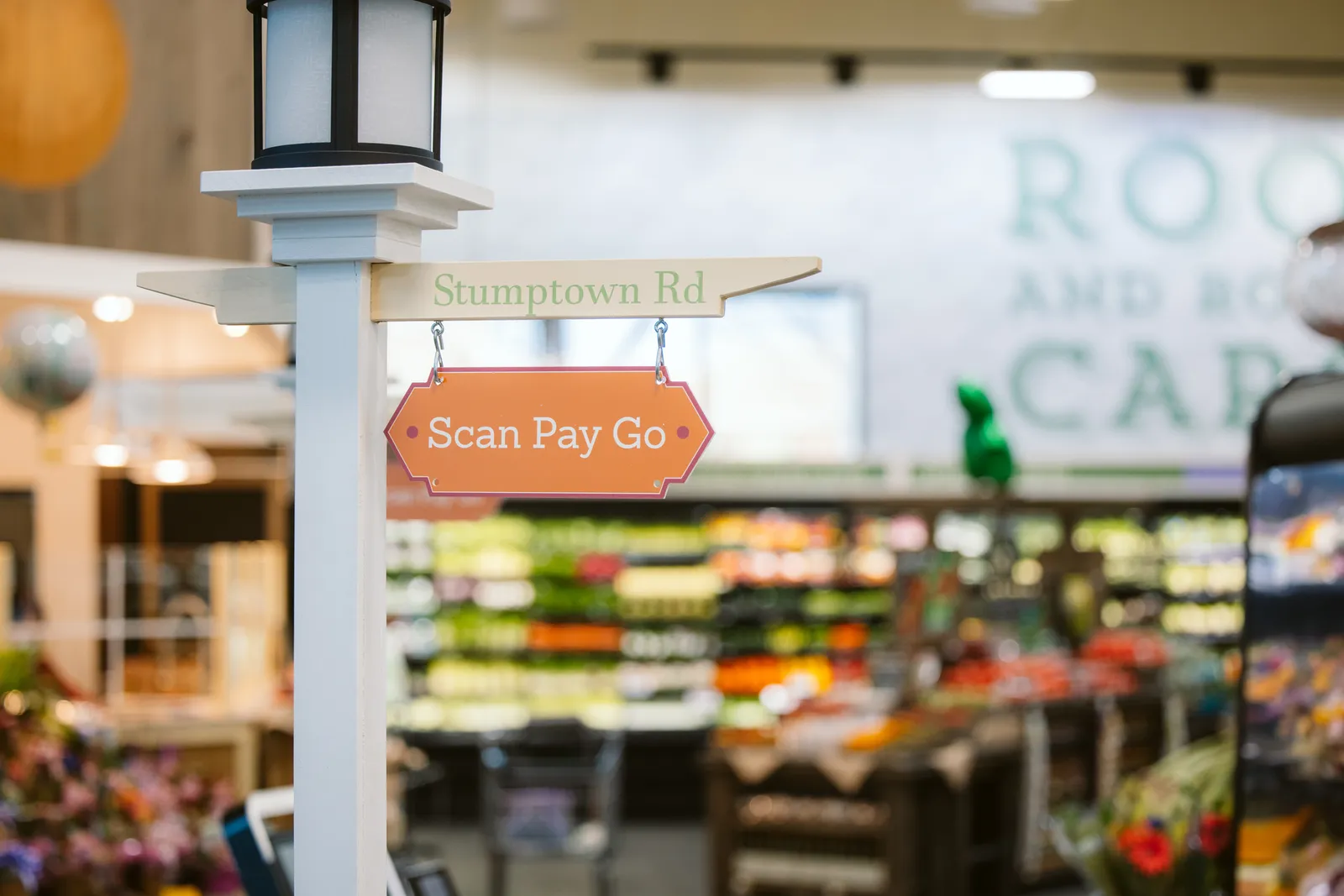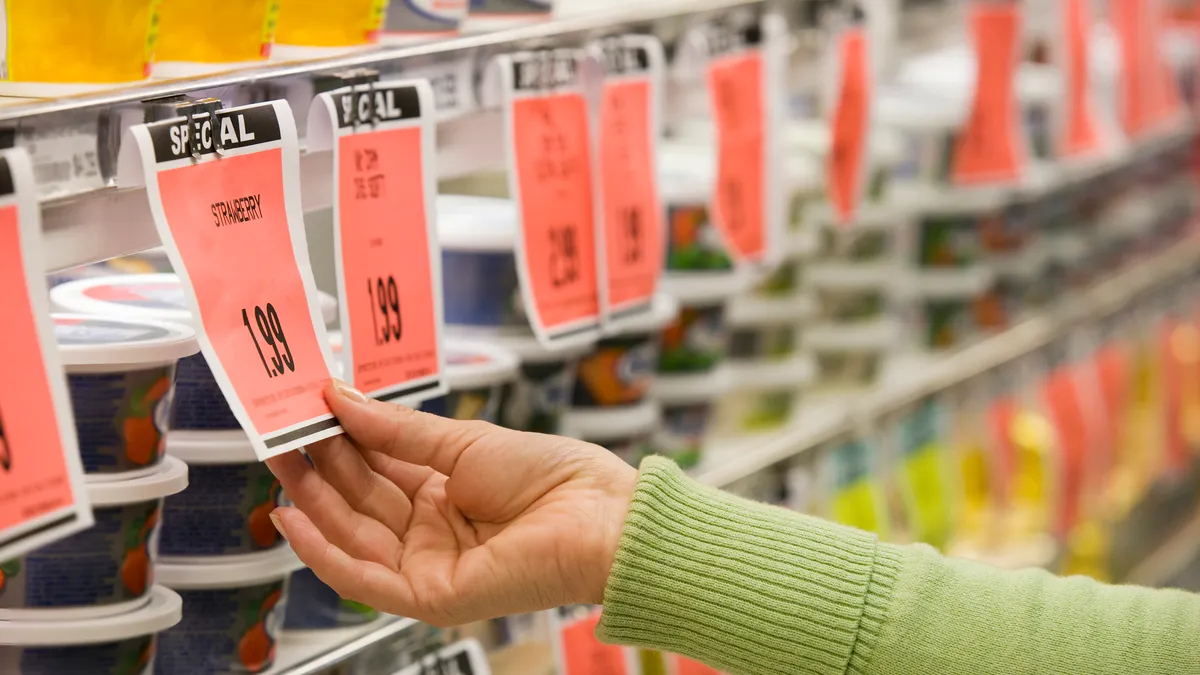Pardon the Disruption is a column that looks at the forces shaping food retail.
The past few years have presented distinct narratives for the grocery industry. 2020 was the COVID year, while 2021 was the year online grocery vaulted to new heights. Last year was the year inflation took hold and consumers began to closely watch their spending. It was also the year when news of Kroger and Albertsons’ merger rocked the grocery world.
So what’s the dominant narrative for 2023?
It’s difficult to settle on one succinct summary for a year so full of complexity. Inflation rose in the first half of the year, then fell steadily in the second half. Consumers continued to shop their local stores while also showing they like to mix in the pickup and delivery services they had grown to appreciate during the height of the pandemic. Shoppers have also remained highly price sensitive, with many trading down to cheaper product alternatives and discount stores — yet they have also shown a willingness to spend on the items that matter to them.
There was plenty of major news, of course. Aldi scooped up a major supermarket chain. Kroger anointed C&S Wholesale Grocers as the company to inherit its divested stores should its megamerger with Albertsons go through. Amazon paused its grocery store rollout, then quickly came up with a new model. CEO announcements from Lidl, Save A Lot, Publix and Giant Eagle generated significant industry buzz.
In thinking back on everything that’s happened this year, I keep coming back not to a phrase or a collection of thoughts, but to one word. That word is value.
On one level, I’m talking about value in terms of lower prices, promotions and discounts. 2023 was a year when shoppers were looking for value pricing. They traded down from name brands to private label goods. They sought to stretch their dollar, and grocers tried to accommodate them with expanded sales, larger pack sizes and more.
But on a deeper level, I’m talking about value as the regard shoppers have for the grocers that operate in their communities. What is the value of Store A over Store B? What does one offer that the other doesn’t? With so many consumers closely watching their spending, the importance of not just pricing but of positioning, connection and differentiation came to the forefront this year.
If a shopper doesn’t see a clear value in the grocery store they frequent, they’re more likely to defect to a lower-price alternative when they’re feeling economically squeezed. We saw that happen as Walmart gained considerable market share and put major pressure on chains like Kroger and Giant Eagle.

Grocers have been working to better define their value in recent years by rolling out signature services, new formats, eye-catching private labels and refreshed stores. There’s still a lot of sameness across the industry, however, and a rising challenge coming from players like Walmart, Aldi, Amazon, dollar stores and a potential Kroger-Albertsons behemoth. With price sensitivity sure to extend well into 2024 and perhaps even beyond that as millions of Americans remain on shaky financial footing, the importance of providing a true value to shoppers is going to remain paramount for retailers.
That’s my overarching trend for 2023, though it isn’t the only one worth calling out. Here are six other developments I picked up on this year.
Walmart is crowding out the competition
The megaretailer has been taking market share from grocers for years, and in 2023 it really ran away from the field. Between 2022 and this year, the company gained more than a percentage point in grocery share, according to data released this summer by Numerator, and now accounts for more than a quarter of industry sales.
In addition to its everyday low prices, Walmart has been swiftly remodeling stores to give them a more vibrant look and feel. It has also continued to draw shoppers’ online dollars away from grocers with its popular store pickup and delivery services.
Walmart has added more premium products and services, including its Walmart+ membership, making it feel less like a tradeoff for consumers. It’s no wonder Kroger and Albertsons want to combine. That’s the only way they can hope to keep up with Walmart’s progress.
Discount retailers are unsettling the grocery cart
It’s not just Walmart that’s benefiting from consumers trading down. Discount chains like Aldi, Grocery Outlet and dollar operators have been pulling in more shoppers and positioning themselves for continued growth in the years ahead.
These fast-growing competitors are present in just about every major U.S. market. Aldi set out to open 120 stores this year while Grocery Outlet will open close to 30 locations. Dollar General and Dollar Tree, which measure yearly store growth in the hundreds of outlets, are putting more grocery products in their stores. Dollar Tree executives said earlier this year that the company will stock groceries at a variety of price points in more than 4,000 stores by the end of this year.
What makes discounters all the more disruptive is their ability to evolve. Not only has Aldi updated its stores to rival traditional grocery stores, but this year it went out and acquired the Winn-Dixie and Harveys Supermarket chains in what is certainly 2023’s biggest story.

If I had a dime for every time someone said ‘omnichannel’ ...
In-store shopping returned in force last year, and that habit continued into 2023 as many people shied away from the extra fees and higher prices that come with online shopping.
Grocers, as a result, didn’t talk as loudly this year about e-commerce innovation. But they did talk about omnichannel retailing at every possible chance. At trade shows, in press releases and conversations with industry experts, the term seemed to hit critical mass this year.
Omnichannel has become one of the industry’s biggest buzzwords. However, I think the industry needs to think deeply about what it really means.
A lot of people and companies use omnichannel as a synonym for online shopping, or as a way to note that they offer e-commerce as well as store shopping. But I think the term and its growing usage points to a need to strategically tie the two main channels together. Most shoppers prefer to shop inside stores and make less frequent purchases online. They also prefer to buy certain products, like shelf-stable ones, online while procuring items like fresh produce and meat in stores.
Are grocers shaping their in-store and digital services to meet those behaviors? Or are they just offering the two channels as separate silos under a common brand?
Regional players are looking for an edge
With Walmart ascendant and a potential Kroger-Albertsons looming on the horizon, regional grocers are at risk of getting left behind.
These mid-sized players can’t expect to out-innovate or outspend their large competitors. But they can hone their positioning and make selective investments in areas like store design and perishables. Lowes Foods has really leaned into its new omnichannel app while Schnucks is scaling up tech that helps shoppers find local produce faster.
Regionals are also continuing to play around with new formats. Schnucks and Brookshire Grocery made strides with their “fresh”-focused stores this year. H-E-B has revived its discount store banner, Joe V’s, while Meijer opened its first two supermarkets and announced another location for its community grocery store rollout.
Freshness is clearly a focus, but large chains like Kroger, which has the tagline “Fresh for Everyone,” are also zeroing in on this attribute, making it imperative for regionals to dig deep in order to differentiate themselves.

This year’s hottest new restaurant? The supermarket.
Price-sensitive shoppers have been paring back on visits to restaurants, where inflation has caused menu prices to balloon over the past year and change.
That’s an opportunity for grocers, many of whom have been preparing for this moment for years, having built up their prepared foods, in-store restaurants and other offerings for meals to consume at the store or to take home.
“We’re really seeing a renaissance in the foodservice department,” Rick Stein, vice president of fresh foods with FMI – The Food Industry Association, in a recent interview with Grocery Dive.
From smart salad bars to in-store sushi bars, grocers are investing in fresh meal stops for their stores. The next level requires tying that strategy in with grocers’ core competency: meal prep. We’re starting to see grocers cater to this “hybrid” meals approach by bringing offerings that span various levels of prep — including scratch cooking, heat-and-eat and fully prepared — into unified merchandising sets.
Amazon is down but not out in grocery
Amazon didn’t open any new stores under its Fresh banner in 2023 after pausing new store openings around a year ago. That might seem like a very slow year for the company that says it’s so committed to grocery — but it was doing a lot of work behind the scenes.
This summer, it unveiled a new-and-improved version 2.0 in the Chicago area, and will update the rest of its stores next year under the new look. The e-commerce giant has also made numerous updates to its online shopping service this year, like updating delivery fees and testing a subscription service.
Will this rapid evolution eventually add up to a compelling shopping experience? That’s the key question. Amazon’s grocery push has stumbled out of the starting gate, though its ability to test, learn and invest means you simply can’t count them out.





















